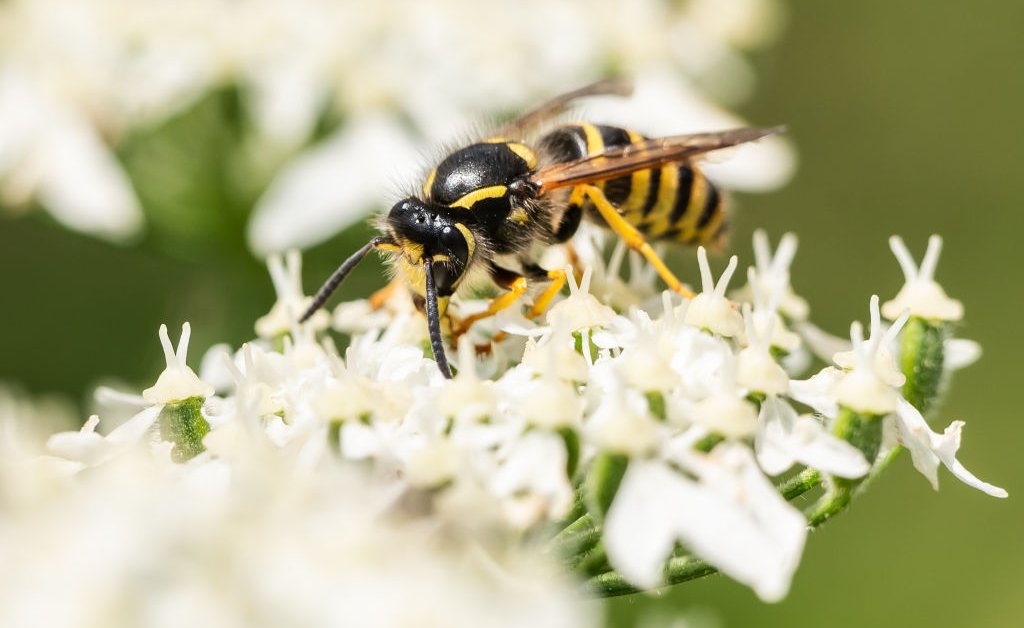Warmer Summers, More Bugs? Understanding Climate Change's Impact On Insects

Welcome to your ultimate source for breaking news, trending updates, and in-depth stories from around the world. Whether it's politics, technology, entertainment, sports, or lifestyle, we bring you real-time updates that keep you informed and ahead of the curve.
Our team works tirelessly to ensure you never miss a moment. From the latest developments in global events to the most talked-about topics on social media, our news platform is designed to deliver accurate and timely information, all in one place.
Stay in the know and join thousands of readers who trust us for reliable, up-to-date content. Explore our expertly curated articles and dive deeper into the stories that matter to you. Visit Best Website now and be part of the conversation. Don't miss out on the headlines that shape our world!
Table of Contents
Warmer Summers, More Bugs? Understanding Climate Change's Impact on Insects
The world is getting warmer, and with rising temperatures, a buzzing question emerges: Will we see more insects? The relationship between climate change and insect populations is complex, defying simple answers. While warmer summers might seem to benefit insects, the reality is far more nuanced, with significant implications for ecosystems and human society.
The Impact of Rising Temperatures on Insect Populations:
Higher temperatures directly influence insect life cycles. Many insect species are ectothermic, meaning their body temperature is regulated by their environment. Warmer temperatures can accelerate their metabolic rates, leading to faster development and potentially more generations per year. This could result in increased insect populations, especially for species adapted to warmer conditions. Think of the proliferation of certain mosquito species in areas experiencing prolonged heatwaves.
However, the picture is not uniformly positive for insects. Extreme heat can be detrimental, leading to mortality, reduced fertility, and disrupted migration patterns. Droughts, often associated with climate change, can also drastically reduce available food and water sources, negatively impacting insect populations.
Beyond Temperature: The Wider Effects of Climate Change:
Climate change's impact on insect populations extends beyond temperature alone. Changes in rainfall patterns, increased frequency of extreme weather events (like floods and wildfires), and altered vegetation are all contributing factors. These changes can disrupt the delicate balance of ecosystems, affecting the availability of food sources, habitats, and natural predators for insects.
- Habitat Loss: As climate change alters landscapes, suitable habitats for many insect species shrink, leading to population decline.
- Range Shifts: Some insects are migrating to higher altitudes or latitudes in search of more suitable climates, potentially disrupting established ecosystems in their new locations.
- Predator-Prey Dynamics: Changes in the distribution and abundance of both insects and their predators can lead to cascading effects throughout the food web.
Specific Examples and Case Studies:
Numerous studies highlight the varied effects of climate change on specific insect populations. For example, research has shown increases in certain pest species like the mountain pine beetle, leading to widespread forest damage. Conversely, other studies indicate declines in pollinator populations, raising concerns about the future of agriculture and ecosystem health. [Link to a relevant scientific study].
The Implications for Humans:
The changes in insect populations have profound implications for humans. Increased numbers of agricultural pests can lead to crop losses and necessitate increased pesticide use. Declines in pollinators, such as bees and butterflies, threaten food security and biodiversity. Furthermore, the spread of disease vectors, like mosquitoes carrying malaria or Zika virus, is directly linked to changing climates.
What Can We Do?
Addressing climate change is crucial for mitigating its effects on insect populations. This includes:
- Reducing greenhouse gas emissions: Transitioning to renewable energy sources and adopting sustainable practices are critical steps.
- Protecting and restoring habitats: Conserving existing natural areas and creating new ones provides essential refuge for insects.
- Promoting sustainable agriculture: Reducing pesticide use and adopting practices that support biodiversity can help maintain healthy insect populations.
The relationship between warmer summers and insect populations is far from straightforward. Climate change presents complex challenges, impacting insect populations in diverse and often unpredictable ways. Understanding these impacts is crucial for developing effective strategies to protect both biodiversity and human well-being. We need to act now to mitigate the effects of climate change and ensure a sustainable future for both insects and humanity.

Thank you for visiting our website, your trusted source for the latest updates and in-depth coverage on Warmer Summers, More Bugs? Understanding Climate Change's Impact On Insects. We're committed to keeping you informed with timely and accurate information to meet your curiosity and needs.
If you have any questions, suggestions, or feedback, we'd love to hear from you. Your insights are valuable to us and help us improve to serve you better. Feel free to reach out through our contact page.
Don't forget to bookmark our website and check back regularly for the latest headlines and trending topics. See you next time, and thank you for being part of our growing community!
Featured Posts
-
 Where To Watch The French Open 2025 Your Uk Viewing Guide
May 26, 2025
Where To Watch The French Open 2025 Your Uk Viewing Guide
May 26, 2025 -
 Ex Oregon Workers Cross Ocean Journey Hawaii Bound With Feline Friend
May 26, 2025
Ex Oregon Workers Cross Ocean Journey Hawaii Bound With Feline Friend
May 26, 2025 -
 Trumps West Point Speech A Focus On Us Military Power
May 26, 2025
Trumps West Point Speech A Focus On Us Military Power
May 26, 2025 -
 Roland Garros 2025 Follow Raducanu Vs Wang Live Tennis Scores And Updates
May 26, 2025
Roland Garros 2025 Follow Raducanu Vs Wang Live Tennis Scores And Updates
May 26, 2025 -
 Harvards International Student Enrollment Understanding The Trump Administrations Reversal
May 26, 2025
Harvards International Student Enrollment Understanding The Trump Administrations Reversal
May 26, 2025
